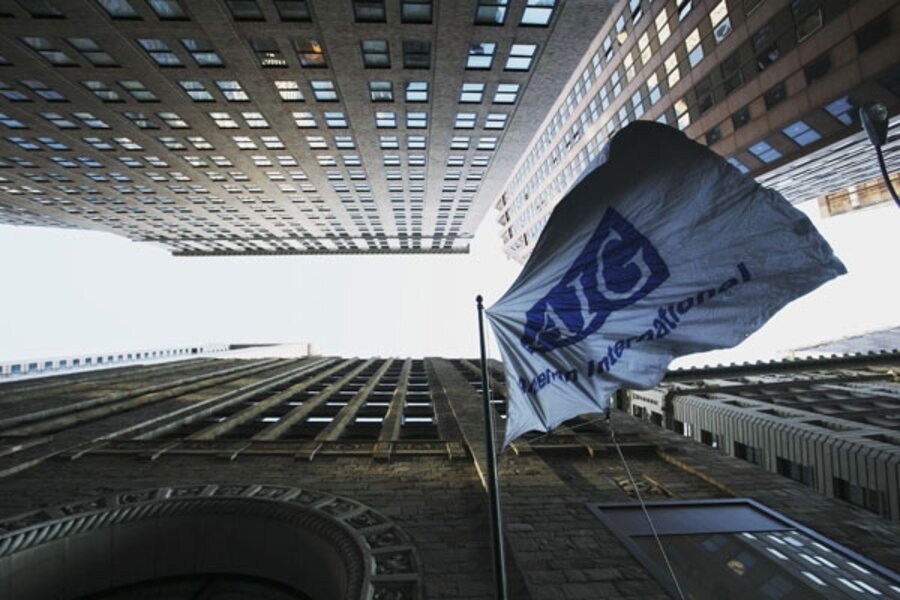Cost of government bailouts headed down, but they'll still be huge
Loading...
Signs of improvement in credit markets are also providing help on another front: Official estimates of the cost of financial bailouts are heading down.
The nonpartisan Congressional Budget Office (CBO) estimates that taxpayers will lose about $159 billion from bailouts of the financial and auto industries.
In March, the CBO put the total cost of the bailouts at $356 billion.
What changed?
The earlier estimate assumed the Troubled Asset Relief Program's entire $700 billion would be spent and less than half would be repaid. The latest estimate is based on the $439 billion that the government has invested or loaned out so far.
The CBO also said it lowered its estimate because of improved financial market conditions since this spring and the repayment of $68 billion in government investments by 10 large banks recently. The budget office estimates that the government likely will lose most of the money it has provided to the auto industry, plus large amounts for the bailout of AIG.
All this runs counter to talk that the bailouts and credit-market rescues are costing trillions of dollars. And whatever the cost, many economists see the improvement in credit markets as a sign that policies by the Federal Reserve and Treasury are working to repair many of the broken sectors of the financial system.
Banks are making progress at working through bad loans, and using the profits on good loans to cover their losses. That has allowed some of them to repair the investments that they received from the Treasury during the period of market panic last fall.
A few big caveats are in order, though.
First, this is just a forecast, and there's still a long way to go before knowing what the final cost will be. A goodly number of economists are skeptical that big banks are as healthy as their first-quarter profit numbers seemed to indicate. Lots of mortgage and other losses lie ahead, and could go higher than expected depending on what happens to the job market and home prices.
Second, the financial crisis has imposed huge costs on the economy in ways that will never be reflected in a narrow tally of bailouts. Unemployment has doubled in the past year, to cite just the most obvious example. That has affected millions of workers, dragged down consumer spending, and thereby reduced tax revenues for the federal government and states. The Fed had to cut its short-term interest rate to zero in its effort to resuscitate the banking sector. That dragged down the income of millions of retirees who rely on bonds and certificates of deposits for monthly cash.
Third, the government will be more involved in the private sector than many Americans would like it to be, for years to come -- due to ownership stakes in firms such as General Motors and Fannie Mae.
Last but not least, the government is spending lots of money directly to stimulate the economy -- which entered a recession largely because of the problems in mortgage and credit. The Bush and Obama stimulus programs will cost nearly $1 trillion. America faced a fiscal day of reckoning anyway, but this makes the federal debt larger and may bring that reckoning forward in time.
Here are some of the details from the CBO report:
So far, the government has provided $55 billion in loans and investments to General Motors Corp., Chrysler LLC, its financing arms and suppliers. The ultimate cost to taxpayers of that financing will be $40 billion, the CBO reckons.
The calculations factor in what the CBO calls the subsidy costs of the bailouts, which includes the risk taxpayers take on by lending to troubled companies. The government received lower dividend payments from its bank investments than private investors would have gotten, for example.
Taxpayers also will lose big on their assistance to failed insurance giant American International Group Inc., the CBO said. The cost of the $70 billion provided to AIG from the bailout program will be $35 billion, the CBO estimated. AIG has also received more than $87 billion in loans from the Federal Reserve.
The bailouts of Citigroup Inc. and Bank of America Corp., both of which received $45 billion from the TARP, ultimately will cost taxpayers $9 billion and $10 billion, respectively, the CBO said.
The administration has committed $50 billion in TARP funds for its Making Home Affordable plan, which is intended to prevent home foreclosures. The plan involves paying mortgage loan servicers that help homeowners modify their loans. None is expected to be repaid.
Material from the Associated Press was used in this report.





